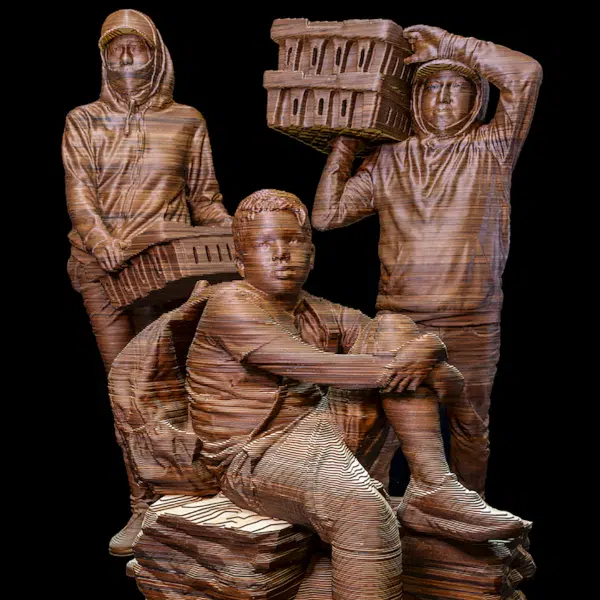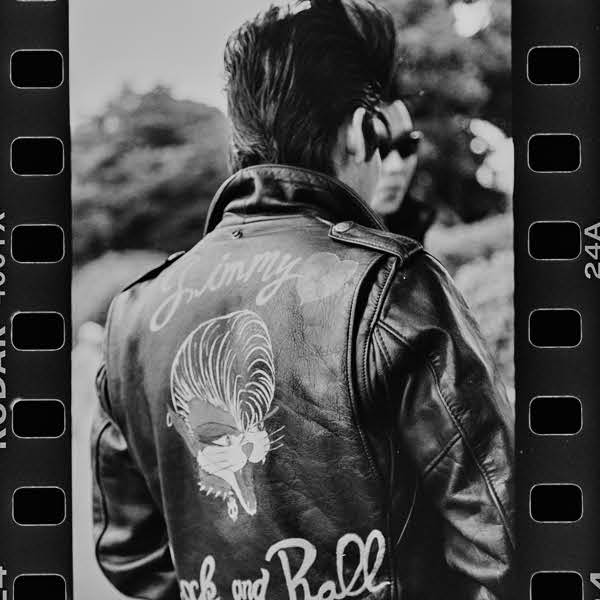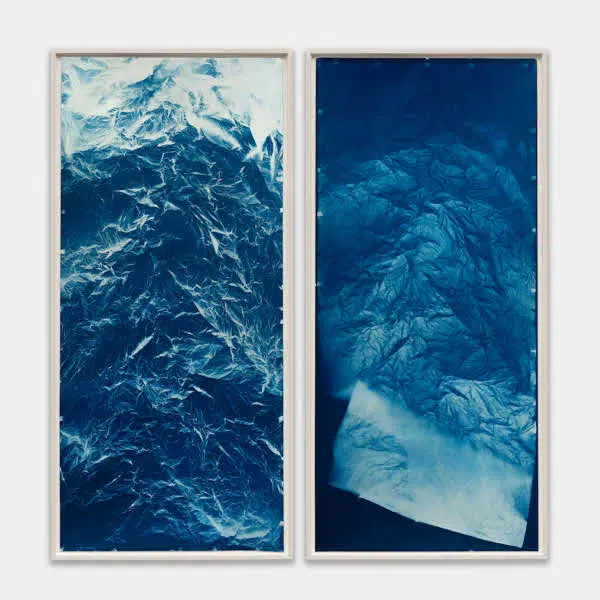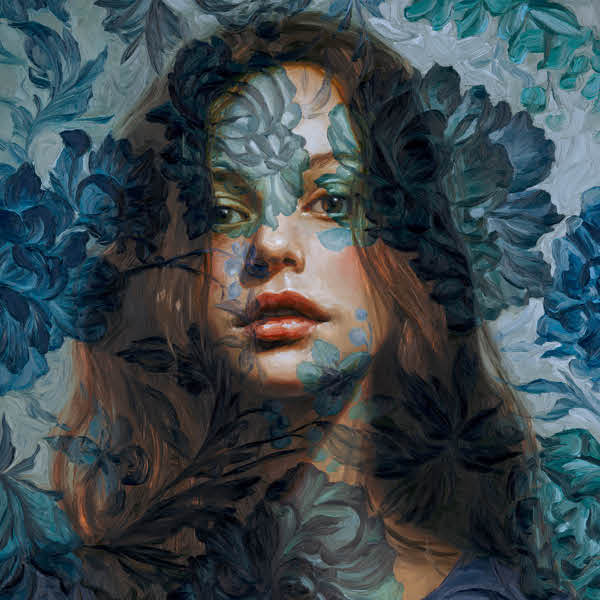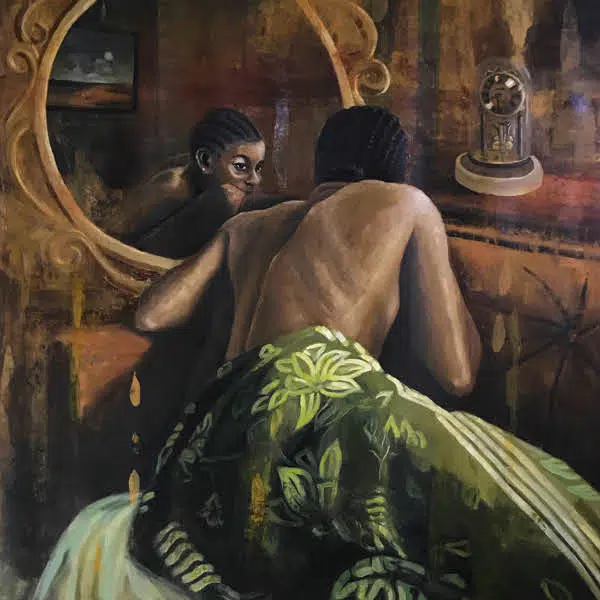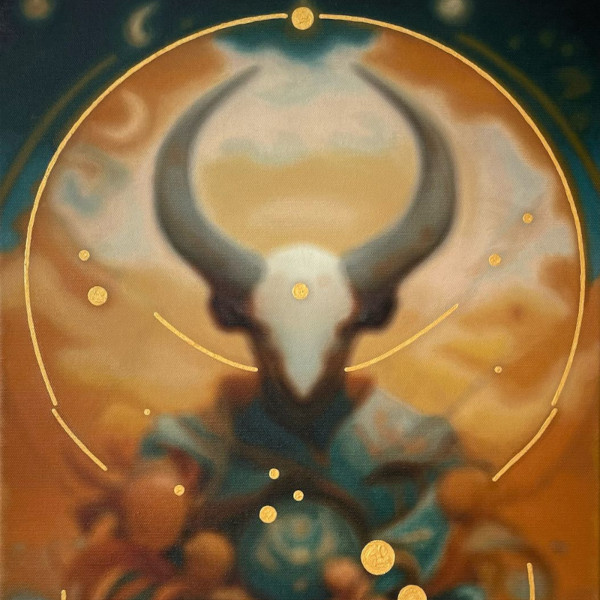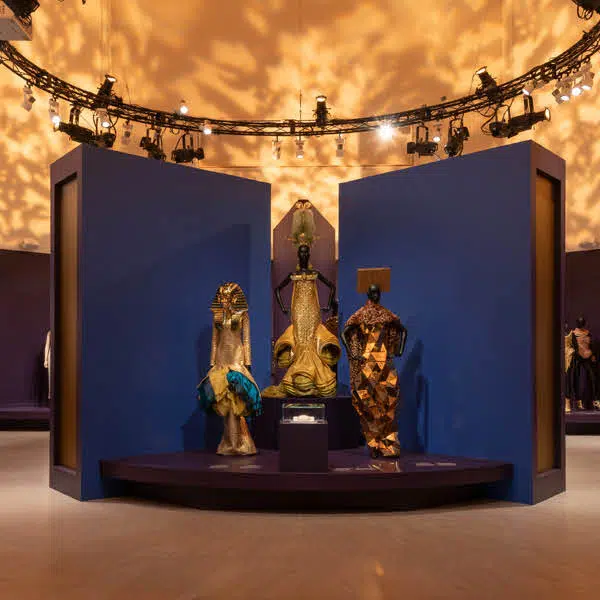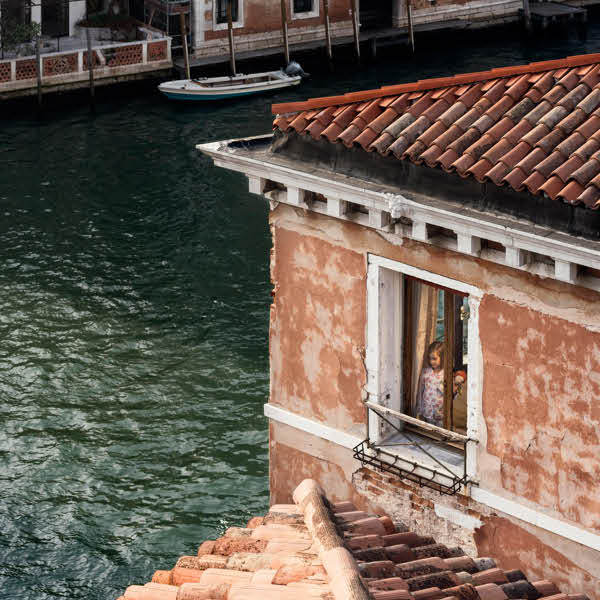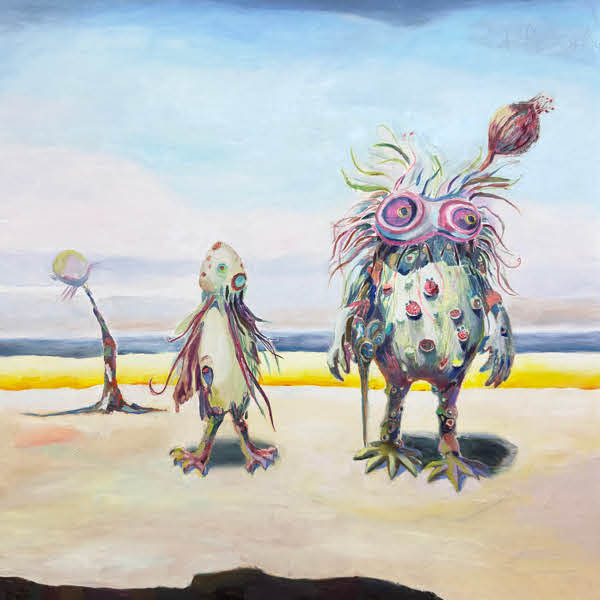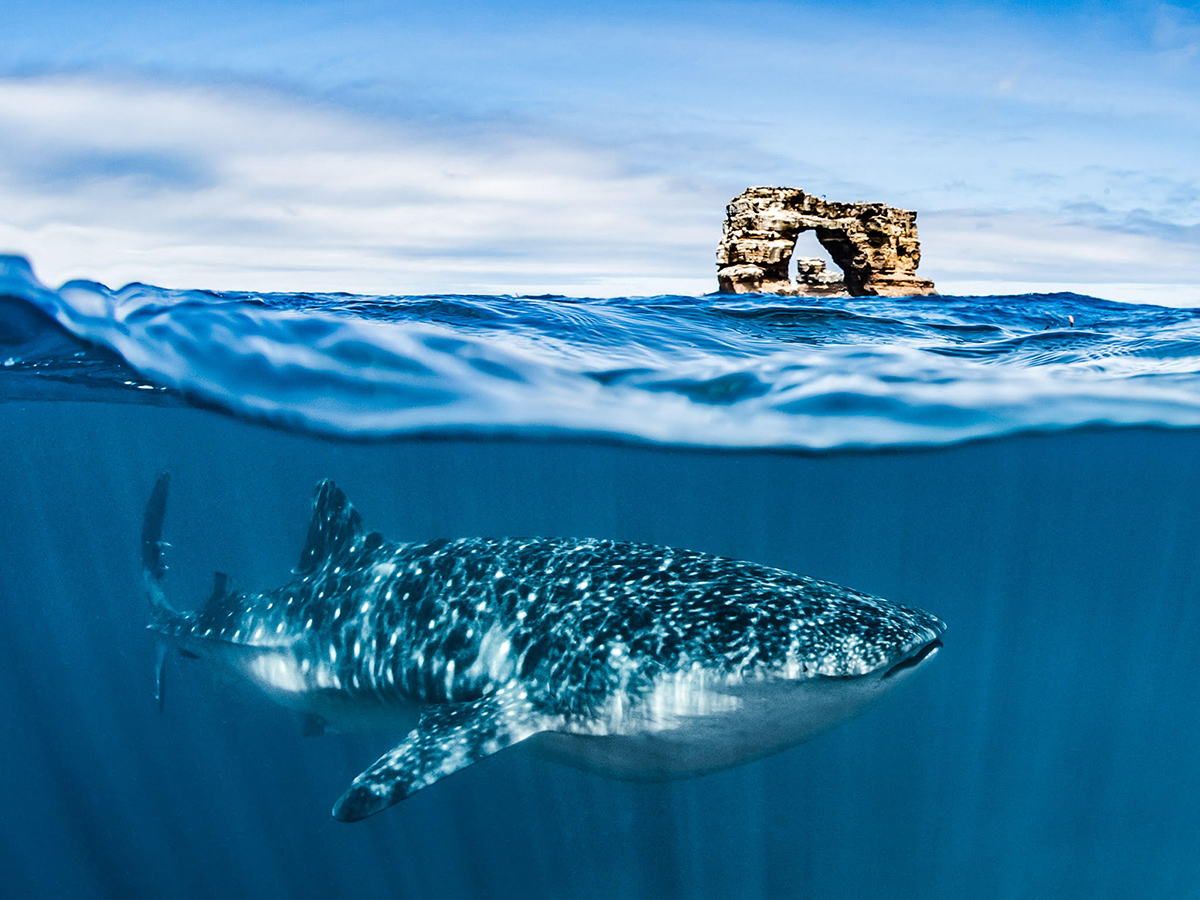
A whale shark glides beneath Darwin’s Island in the Galápagos. (Photo: Shawn Heinrichs / SeaLegacy)
This post may contain affiliate links. If you make a purchase, My Modern Met may earn an affiliate commission. Please read our disclosure for more info.
Did you know that 71% of the Earth's surface is covered in water? As the planet battles pollution and climate change, it becomes increasingly important to protect our oceans for the sake of the creatures who reside in them. Doing so will benefit humans, too; it's a battle we all need to fight. The ocean conservation organization SeaLegacy was founded by professional wildlife photographers with just this mission: to unite people in environmental purpose through art. Now, they need your help signing a petition to the president of Ecuador asking him to expand the Galápagos Marine Reserve to better defend the precious species who inhabit it.
Launched on December 15, the petition is part of a concerted campaign to expand the protected waters around the emerald isles of Galápagos. SeaLegacy—alongside Only One, MasGalapagos, Pacífico Libre, and other organizations both global and local—launched the campaign to sway the Ecuadorian President Lenín Moreno. The president previously spoke on the subject at the 25th United Nations Climate Change Conference (COP25) in 2019. He announced, “Galápagos faces challenges such as climate change, continental plastic pollution, and pressure from fishing fleets and illegal fishing, therefore, we will continue to strengthen the Marine Reserve and we’re analyzing its expansion to protect this heritage for the benefit of humanity, the local population, and biodiversity.”
The 40 nautical miles protected radius around the islands is home to almost 3,000 marine species which are monitored by researchers. Sea lions, manta rays, and hammerhead sharks call the waters home. However, these species are suffering under excessive (and sometimes illicit) commercial fishing from global and local fleets. Species that are not the targets of the longlines can still be hauled aboard—hooked like the rest of the catch. While expanding the area of forbidden waters may seem like a limit on catch volume, the opposite effect has been recorded. Expanded protected waters encourage the growth of populations, such as tuna. These larger populations “spillover” into unprotected areas where they can then be fished. SeaLegacy and other conservation organizations are spreading the message that this is a long-term win for artisanal local fisheries as well as the larger commercial fleets. Research has shown an expanded marine reserve can even aid local economies—especially artisanal fishing and tourism—as well as preserve endangered species.
The Galápagos Marine Reserve expansion has not occurred since the President's 2019 public remarks. Although in 2010 the reserve was removed from the UNESCO World Heritage's list of sites in danger, there is much more that can be done to preserve the global treasure. SeaLegacy decided to take up the cause. Their experienced collective of photographers and videographers specializes in rallying their large audiences to environmental action. Renowned photographers Shawn Heinrichs and Cristina Mittermeier set out for Galápagos to capture evocative images of the creatures the reserve shelters. Their images capture a colorful world of often curious—and sometimes intimidating—creatures. Among these are the eccentric birds known as Blue-Footed Boobies and whale sharks (the world's largest fish). Through the photographers' up-close-and-personal images, it is easy to see why scientists have been fascinated with Galápagos since the days of Charles Darwin. It is also evident why Galápagos is a source of deep national pride for the country of Ecuador.
My Modern Met had a chance to catch up with Shawn Heinrichs—one of the photographers shooting in the Galápagos and a co-founder of SeaLegacy (alongside Paul Nicklen and Cristina Mittermeier, who began the organization). An Emmy-award winning cinematographer with almost two decades of experience shooting still and video imagery underwater, Heinrichs's love for the oceans dates back to his childhood in South Africa. Years ago, he left the business world to pursue photography and conservation and founded the Blue Sphere Foundation. In 2019, his organization merged with SeaLegacy to fight together for the preservation of our oceans.
Read on to learn more about his work, experiences shooting on location in Galápagos, and why SeaLegacy believes it is critical that the Galápagos Marine Reserve be expanded. (The interview has been edited for clarity and length.)
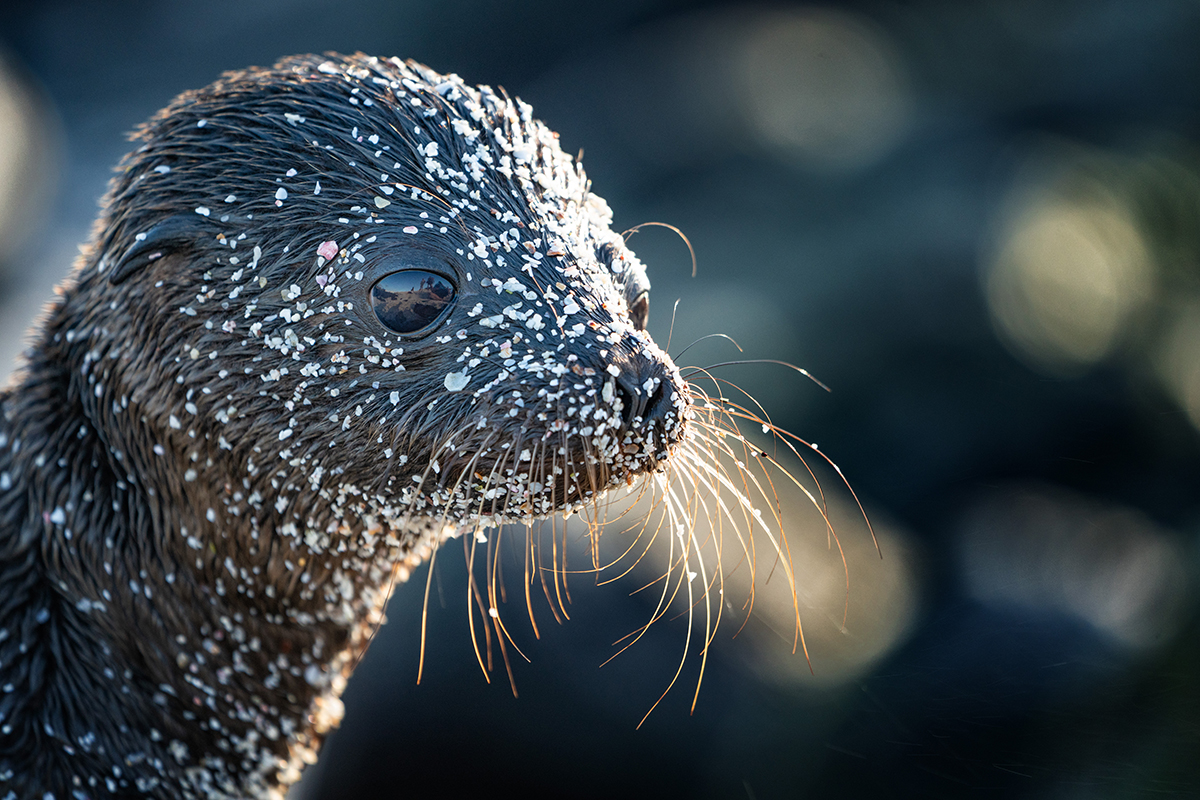
A Galápagos fur seal pup coming up from a nap in the sand. (Photo: Cristina Mittermeier / SeaLegacy)
You have advocated for ocean creatures and their environments for many years—first with your own organization Blue Sphere, and now as a co-founder of SeaLegacy. What sparked your interest in ocean conservation in particular?
It's interesting. Because I think my background is not a traditional photographer or filmmaker, I often joke that I'm completely unqualified, because I never took a photography filmmaking, editing, journalist, or communications course in my life. My background actually came from business. I was in business development and finance for technology companies. So people are like, “Oh, how did you get into this,” right? It actually goes back to my childhood. I was born in Durban, South Africa. I grew up on the wild coast—which is some of the most rugged but also vibrant oceans in the world, especially back then. Childhood memories were these incredibly abundant seas, where seasonally you would get shoals of sardines seven miles long, turning the entire ocean black with their shadows. You'd have all the predators descend in thousands of Cape Gannets and tens of thousands of dolphins and sharks. Behind them, humpback whales leaping. That was my experience with the oceans as a small child.
When I moved to the United States, I didn't spend as much time in the ocean. Right before university, I took up scuba diving, and the oceans that I discovered—particularly in the Caribbean—were nothing like what I understood them to be as a child. It's in my lifetime, that short time since my childhood, we have lost so much. I think that left a really indelible mark on me. My travels through business development sort of brought me constantly back to the ocean as I dived more, and I realized my hobby of photography and my passion for nature needed to come together, and turn away from just trying to earn money and really try to make an impact before we lose it all. So what was a hobby and a passion became an absolute pursuit for me and, eventually, an entire career. I never looked back.

Sea lions play off shore of Darwin’s Island. (Photo: Cristina Mittermeier / SeaLegacy)
Do you have preferred equipment that you use when you're photographing underwater?
My first underwater imagery work was with a film camera using Nikonos, a dedicated underwater film camera. For a number of years, I poured all my passion into still photography. Then I was on a trip with a friend and he had this nice HD video camera with him. He captured some content. I watched it and I was like, oh my god. I'm trying to communicate a story with a single image. With the video, he was able to capture an entire story. So I made an investment in a video rig. But along the way, I also realized that I still love that moment. And so there's a number of us in the industry that have really been dual shooters—both still and in video. Paul Nicklen, Andy Mann, and John Weller—we have members that are really unique hybrid shooters.
The evolution has been long, but I shoot with a really incredible set of equipment now, thanks to support from sponsors. I have an 8K RED Digital Cinema camera that literally is full IMAX quality imagery. I do my video filming with that. For still photography, I also have incredible Canon sets—Canon EOS-1D X Mark II has a really fast, incredible, beautiful sensor—highly resilient cameras that I can take all over the world. So my bag is heavy, my check-in is heavy, and my backpack is even heavier. I need to have all the equipment, I need to capture both those images and still videos that tell that story.
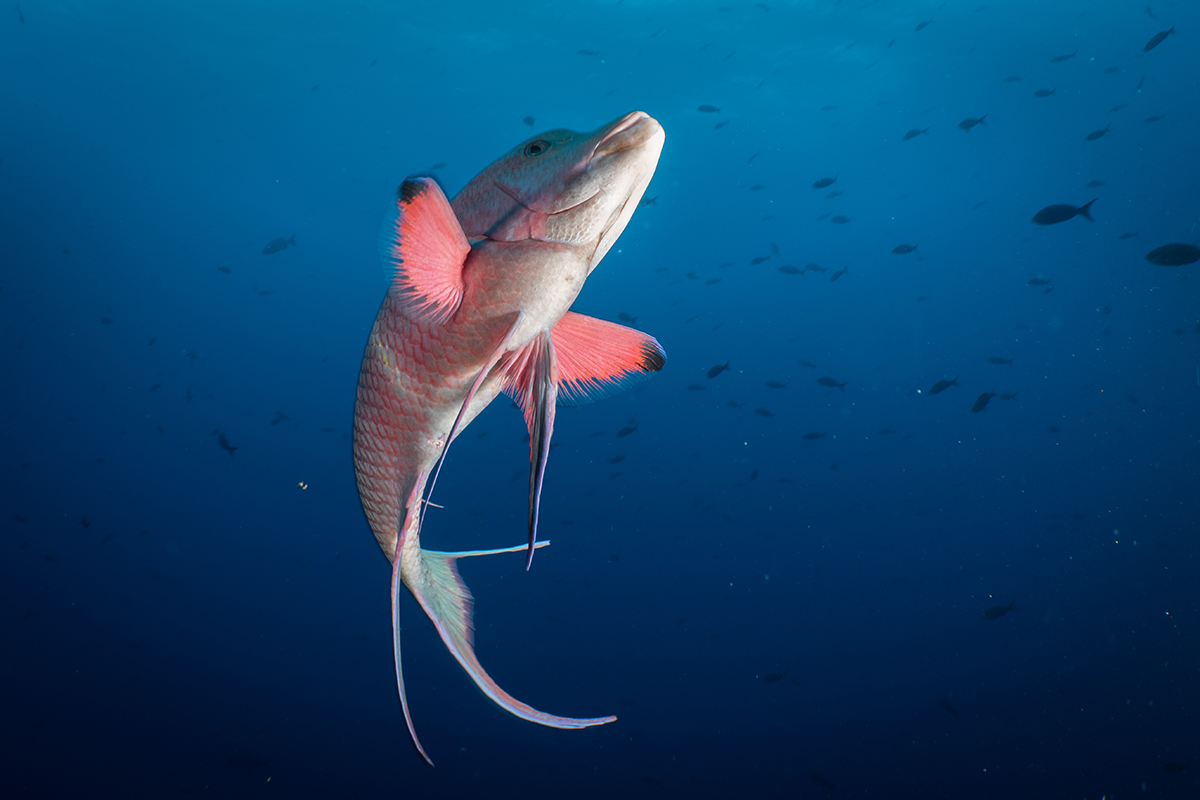
A Sheephead wrasse scavenges across the reef. (Photo: Cristina Mittermeier / SeaLegacy)
Despite the big camera, all of the marine life in your underwater images appear very calm and at ease. How do you approach these wild subjects in their environments?
It starts with a deep realization that you're stepping into their world. This is their home, their space, and there's a flow to it, there's an energy to it. I sometimes talk to photographers that are getting started and they talk about taking a photo. That's not the right language. For me, it's more about surrendering to an experience, letting that experience unfold, and becoming part of it. Then in those moments, flipping on the camera and capturing what's happening from that standpoint. It's approaching these animals on their turf and on their terms—allowing them to invite you into their world. They're all about the energy. So when I approach them, I am surrendering to their space, just creating a very neutral, positive receptive energy and allowing them to approach me. As we get closer and the experience unfolds, I introduce my camera and other equipment into that experience so that it becomes beautifully organic and natural. You end up with these incredible images which you can't run and capture—you've got to be there and surrender to get them.
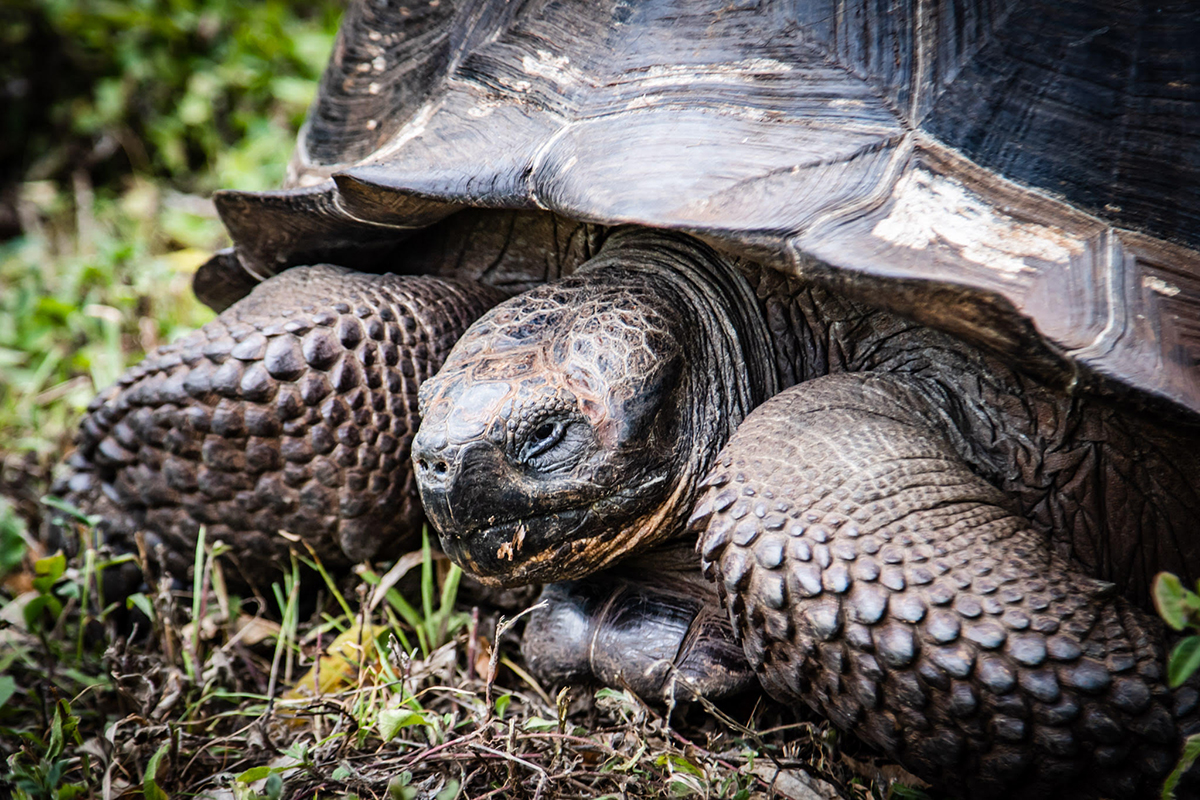
A Galápagos tortoise feeds on a volcanic island in Galápagos. (Photo: Shawn Heinrichs / SeaLegacy)
On your website, you say that art and conservation are deeply entwined. Could you elaborate a bit more—particularly with respect to photography and videography—how you see these two concepts being integral to modern conservation efforts?
Art is a universal language. It can cross cultures and generations and all types of different demographics. It's something that also speaks to your heart, first and foremost, and then your mind. So if you're going to try to inspire someone to make a change in their life—to stand up for a species, to protect a remote area, to oppose a pipeline, to stop drilling—it's going to start with their heart. The way to get to the heart is through art. I used to do paintings and drawings as a small child. It was a fundamental part of my development, and later in life the transition to a camera too.
With a camera, you can use lighting and composition and lenses and stuff to really approach photography from an artistic standpoint. You've got to evolve from capturing a moment to getting into the experience and, ultimately, to really capturing the feeling. What did I feel at that moment? My photography, I call it surreal. It's all very real, but it has that surreal aspect. It's more magical than you can imagine. It's a combination of lens choice and exposures and editing compositions. When someone looks at my images, the greatest compliment is that they can express to me a very powerful feeling. Even more importantly, it's the feeling that I was hoping that they would have. It's the feeling that I had at that moment when I was capturing that image. From that feeling, they now then seek ways to which they can learn more and engage more—they take ownership of the conservation experience because of the way that art has touched their heart.

Green sea turtle swimming through a school of Creole wrasse at Kicker Rock, Galápagos. (Photo: Cristina Mittermeier / SeaLegacy)
Some of your personal work, such as “The Dark Room“, captures the negatives of human/animal interaction—including the trade in shark fins. Other works show more positive connections such as dances with manta rays. What is necessary for a balance between the interests of humans and those of the animal kingdom?
The first thing I often ask people is, well, why is the human experience paramount? A humpback whale that traverses the ocean interacting with species across the entire ocean navigates thousands of miles. It's able to look after its calf and show the love, compassion, and connection with the calf as well we connect with human beings. It's every bit as sentient, as emotional, and as connected—if not probably more so than us. So it's to understand that our view is not the only view. We're humans, and we have a species-centric view. We shouldn't assume it is the ultimate experience. Every species has its own unique way of experiencing this world that we call Earth.
What we've learned—after many years of preconceived notions about what animals don't feel or do feel—is that animals have an incredible capacity for emotion. People often think that fish don't feel pain. Well, it turns out their nervous systems are highly developed. So the justification for the way we treat fish goes out the window. Then we look at the capacity for species that we understand more closely—mammals like elephants—and we see the familial lineage bonds. We see the connections and the herds gathering around the newborn babies in ways that humans don't even do anymore. So there's no such thing in my mind as to anthropomorphize [an animal] because that's a very human-centric view. These animals have rich, developed nervous systems—highly evolved emotional systems. It's not for us to judge or to make them more or less worthy of conservation and protection because we don't understand it.
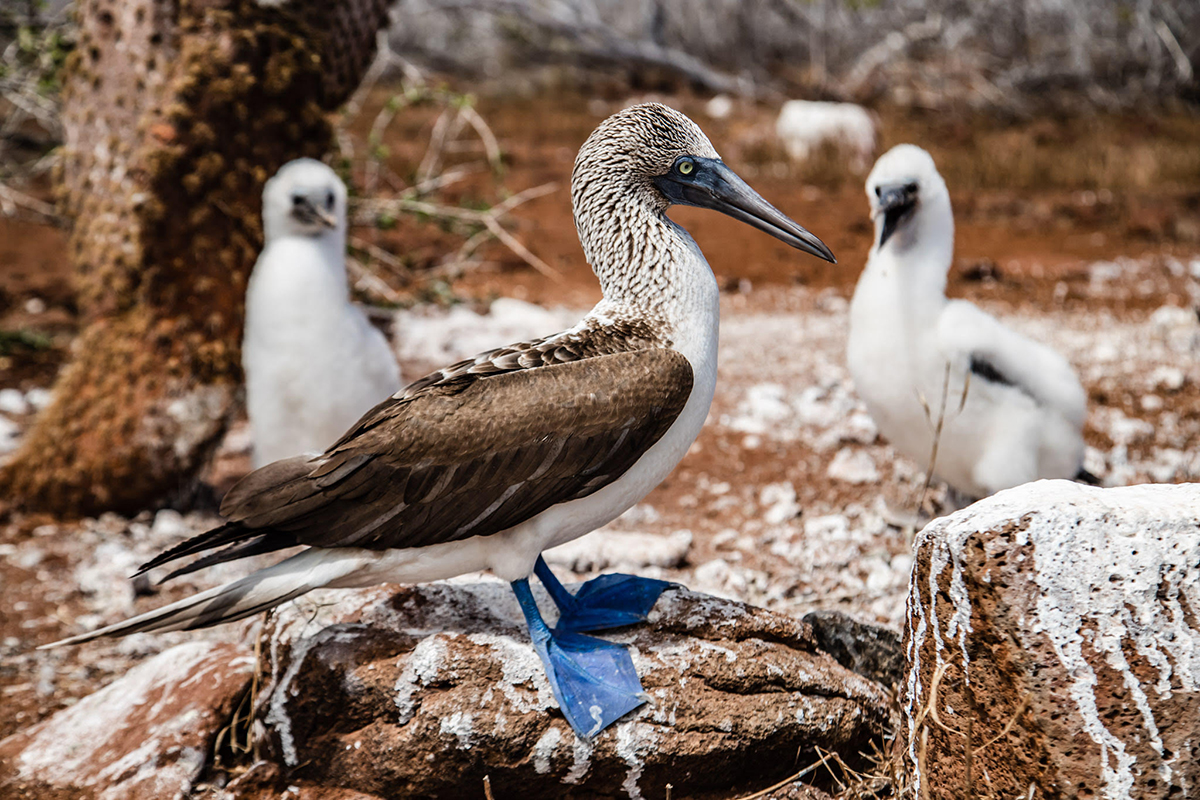
A blue-footed booby guards over molting chicks. (Photo: Shawn Heinrichs / SeaLegacy)
Shawn Heinrichs Speaks on Sealegacy's Galápagos Campaign
You traveled to Galápagos to shoot these images for the campaign. Excessive commercial fishing is identified as a threat to marine life in the area. In your work with SeaLegacy, is it difficult to convince fisheries or government officials that expanding marine reservations is actually good economically, as well environmentally?
It is a challenge and presents a couple of the reasons why any conservation initiative is a challenge. Of the three barriers to conservation, the first and most prevalent is ignorance. So many people just don't know what's happening, or they don't understand the complexity of how systems work. When apathy comes into play is once they start to become informed, they're apathetic—somebody else will deal with it. Well, the life support system of our planet, the oceans, are everybody's problem. There needs to be a very hard turn in the corner on apathy right now because we all have to be part of that solution. The final one—this is the most insidious—is greed. [People thinking,] “I am informed, I'm educated, I am invested in the issue, but I don't care, because I am profiting from it. I think I'm going to be okay, regardless of the long-term consequences.”
When it comes to fisheries management, unfortunately, greed has played an overt role in shaping those policies around the world. Unfortunately, many of the regulatory bodies that are meant to manage fisheries are managed by the very organizations that are profiting. You have a situation in Galápagos, a marine park that's been there for a little over two decades and that has been beset by illegal fishing periodically throughout that period of time. Those folks are looking to profit by catching and selling as much red gold (which is tuna) in the shortest period of time. There are other species as well, the fins they target for Asian markets and things like that. They have been operating in and around and illegally intruding upon those in the park as well. So despite the information, despite the fact that we know that the Reserve has actually resulted in larger catches for these very same fleets, the fleets are bigger and catching more than ever. So the reserve is working. But despite that, because of the short-term nature and short-sightedness, they still push to limit those protections so that they can capture the “gold rush: as much as they can a short period of time.
The Reserve is under more pressure than it's ever been. We either expand this incredible treasure right now or we risk loss on such great proportions that we don't know if it would ever recover.

Sally lightfoot crabs catch the afternoon sun in the Galápagos Marine Reserve. (Photo: Cristina Mittermeier / SeaLegacy)
SeaLegacy is partnering with several Ecuadorian NGOs to work on the petition to expand the Reserve. As you gauge it, what is the local feeling about expanding the reserve? Is that something that is talked about on the island?
The artisanal fishermen are losing out due to this exploitation. There are fishing zones within Galápagos that support artisanal fishing. Tourism is also a huge part of the economy [for the islands] and the main launching point in mainland Ecuador. I think it's fair to say that there's a huge amount of support within Ecuador, and particularly within Galapagos for the expansion of the Reserve. It is a gem for the people of Ecuador. It is a symbol of national pride—one of the most renowned marine parks on all of Earth. I think when it was established, it was the first or second in the world and the second-largest, right? But now it's I think number 33. In terms of size, it's fallen way behind.
It's also a World Heritage Site. It's been one of the sites in danger rating, with the risk of being delisted because of the lack of addressing these issues. The president [of Ecuador] had committed in the United Nations to protect this area. But because of pressure from the industry, he has not followed through on that promise. Short-sighted gain by a select few powerful barons that control the tuna industry risk thousands of jobs—and this incredible sacred place in the ocean—because of unwillingness to act. We have a very short window right now to act. We're calling upon the President to follow through on his promise and protect one of the most sacred gems in all of the oceans and a national emblem for Ecuador.
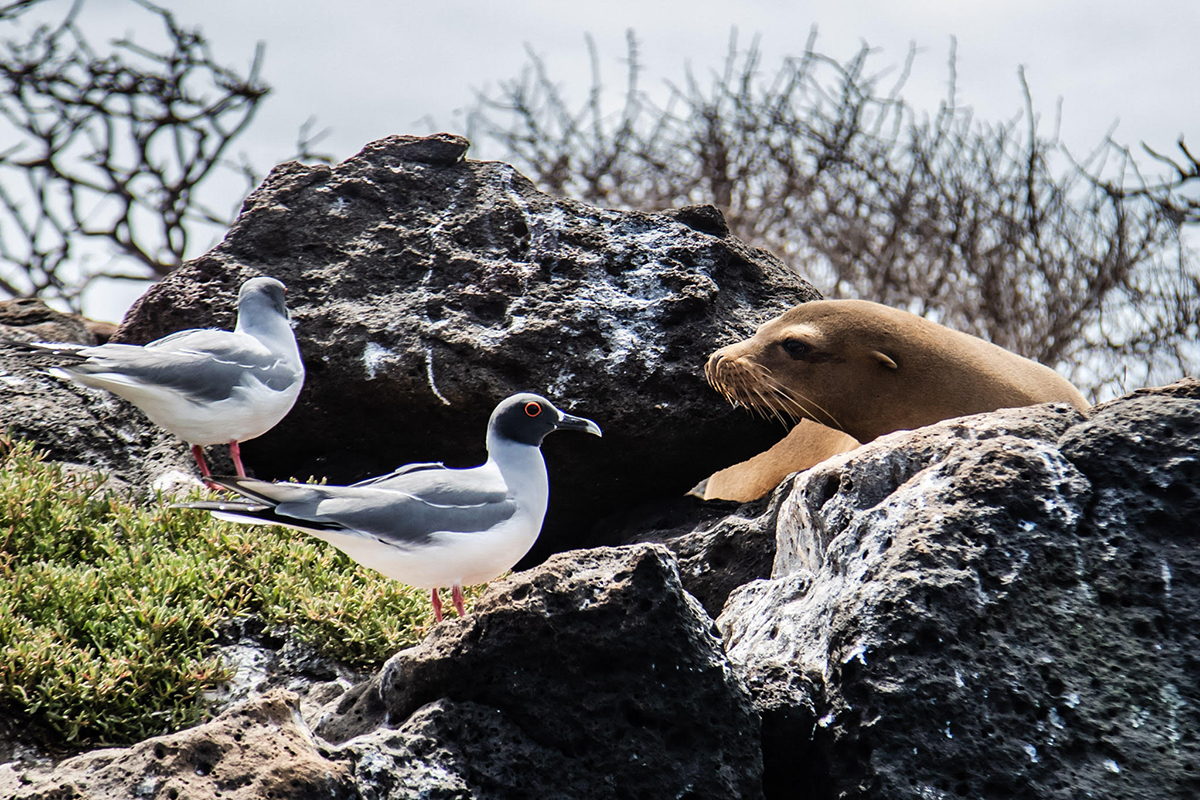
Two swallow-tailed gulls check out a sea lion in the Galápagos. (Photo: Shawn Heinrichs / SeaLegacy)
Of the species you photographed in Galápagos, is there one you are particularly concerned about that our readers should know about?
One of the most vulnerable species is the scalloped hammerhead shark. These sharks don't know boundaries. The closer the fishing boats are to their aggregation spots in Galapagos, the more likely they're going to wander into those lines and get caught. The sharks in particular are incredibly vulnerable. In my years that I've been to Galápagos, the schools are only a fraction of what they used to be (hundreds and hundreds of hammerheads). Now you're talking about dozens, although there are still big days. But most of the days, the numbers are only a small fraction of what they used to be. So they're already highly, highly exploited. There's not a lot much room left, to be honest.
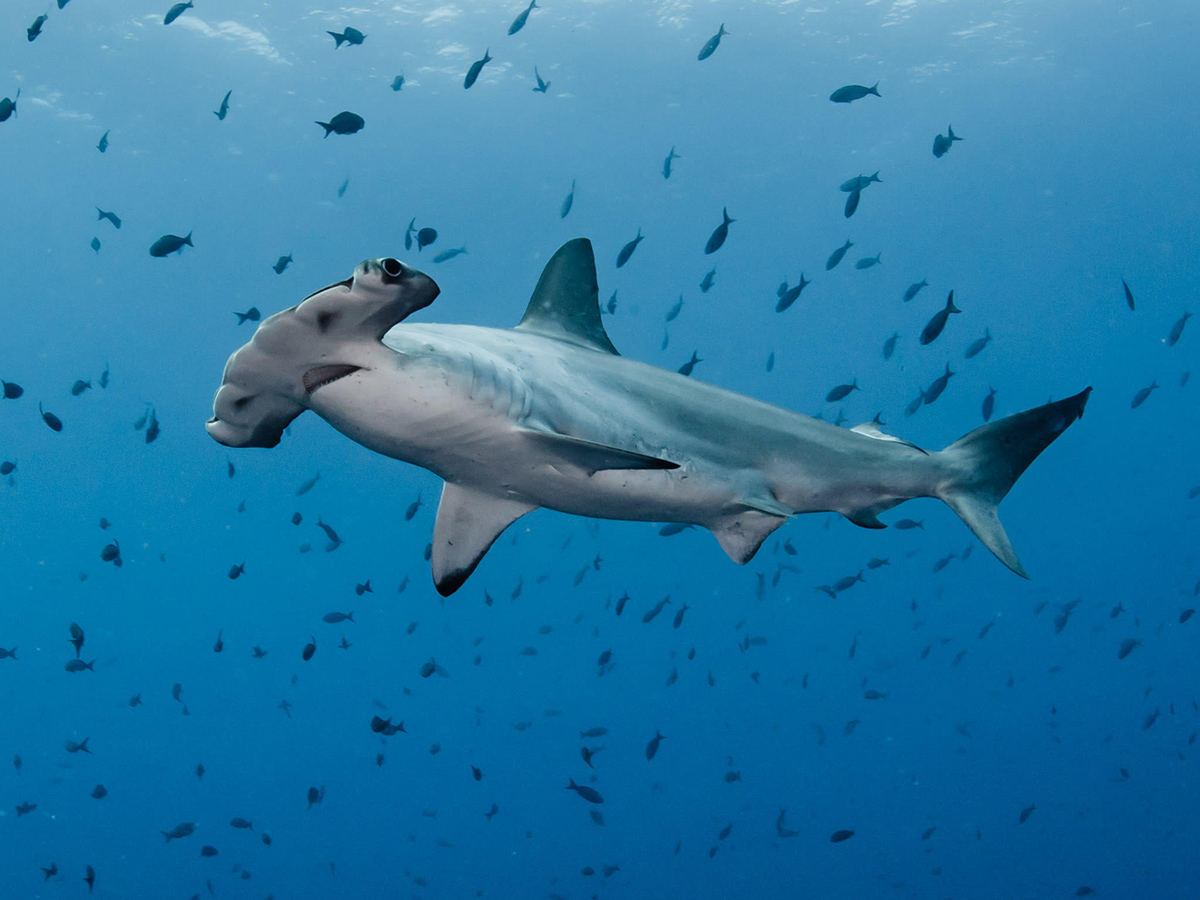
A scalloped hammerhead shark hovers above a cleaning station near Darwin’s Island. (Photo: Shawn Heinrichs / SeaLegacy)
SeaLegacy is hoping to bring crowd pressure through a petition to the Ecuadorian President to expand the marine reserve around Galápagos. The island faces other threats from tourism, developments, and pollution. As someone deeply invested in conservation, are there other changes you would like to see to preserve this natural gem?
I think there are a couple of things. One, there are still domestic fisheries within the park that could be better regulated. These are known issues, and there is a desire to address them. It's a politically challenging situation. But that would be something that's really important because the long-term livelihoods of artisanal fishermen depend on those fisheries being regulated. So they lose out, everyone loses out. I think tourism management has improved massively in the last 15 years. Honestly, I think it is far better run than many places I've been in the world. I think they've done an exceptional job in really addressing those issues. There are still risks around oil spills and things like that. But again, the park has taken some amazing steps.
There's a migratory corridor between Costa Rica, Cocos Island, and the Galápagos—it's like the Golden Triangle. A lot of these animals move along this swim way. It's within the means of Costa Rica and Colombia to designate territorial water protection around those other islands, which would—for all intents and purposes—close off that swim way and create a level of protection that we've never seen for sharks, turtles, and other species. If we can get [the expansion] at Galápagos, can we finish the work in Costa Rica, Ecuador, and Colombia, and really shore up this area?
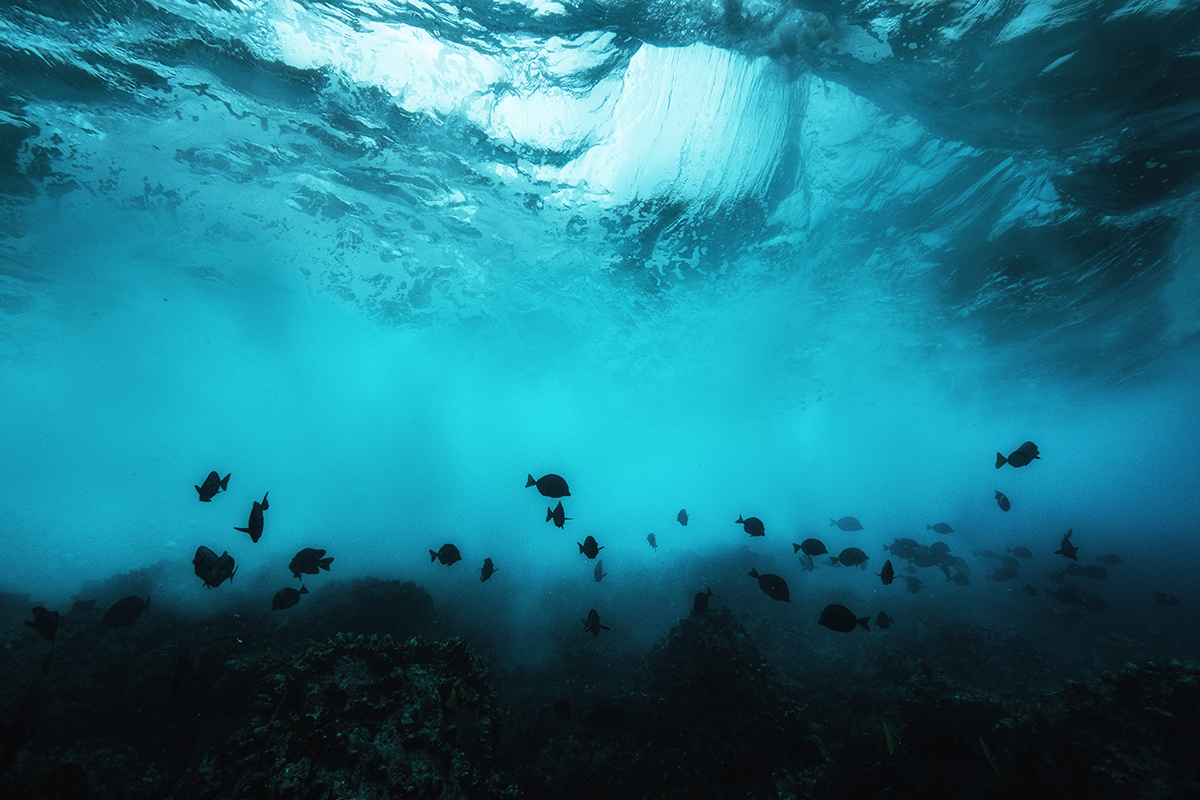
A wave breaks on a reef in Galápagos. (Photo: Cristina Mittermeier / SeaLegacy)
Other than signing the petition and staying up to date on SeaLegacy's campaigns, how can our readers contribute to preserving our oceans?
People often used to ask me, “What can I do?” I used to wish I had a single answer. But now I do. We have our new platform Only One. It's a place where you can dig in, learn, grow, and become part of a conservation movement in the areas that you're interested in—the ones that really speak to you. So I would say, go to Only One and join the team, join the tide, become a contributor. But most importantly, make that a part of your daily practice: read the stories, get informed, get involved, and start making a lot more conscious decisions about the three biggest choices we make on the environment. Those are what we consume, how we dispose of it, and the energy we use. The more you become informed—and the more you become involved—you start self-selecting your behaviors in all those categories that make your footprint on this planet less and your actions more impactful and sustainable.

A scalloped hammerhead shark drifts through a school of Creole wrasse. (Photo: Shawn Heinrichs / SeaLegacy)












































































